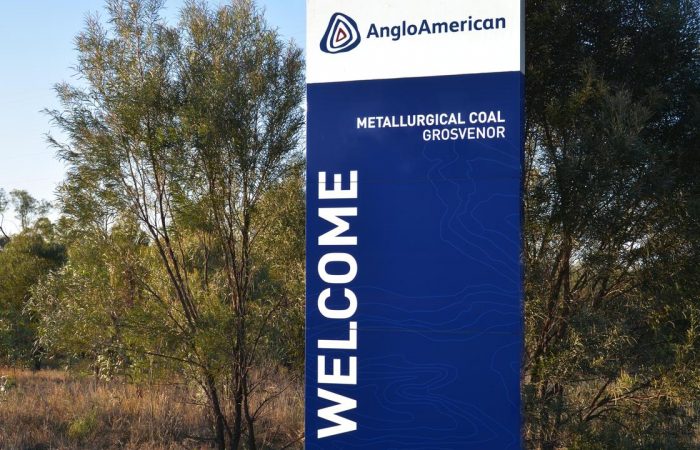
9th May 2018 Goaf Drainage Holes Grosvenor Design, Method of Drilling, Length of Casing
In the Site Meeting part of the discussions involved the Goaf Methane Drainage Holes and Lowering the Face Ventilation Quantities.
Since the last meeting two months ago on the 16th of March changes to goaf drainage hole design and method of drilling, changes to length of casing in goaf drainage holes and reducing Longwall face ventilation quantity had occurred.
- The Goaf Drainage Sytem is at near capacity and had reached a total of 8,200 1/s of total gas (approx. 5,500 l/s Methane). 5.5 cubic metres/second (m3/s) of CH4 and approximately 67% Purity
- 0.8m3/s (800 l/s) of Methane is being extracted from LW101 goaf.
- The Mine is injecting Nitrogen into the 101 goaf in order to try to minimise methane migrating from the 101 goaf to 102 goat as had been successfully achieved at Grasstree Mine.
- Three (3) independent statistical analysis companies to do in depth data analysis to try to identify trends and similarities between gas drainage and methane exceedances.”
- The residual gas content of the coal in 102 LW, where the face position is currently is approximately 2 m/t. This is not particularly high and mines with higher gas content are having very few or no methane issues in the TG resulting in HPl’s with methane greater than 2.5%”
- The lessons learned from this work will be utilised in managing methane in LW103 which has significant challenges with its position under the Isaac River and the difficulty this imposes on goaf drainage hole positioning.
MRE – Grosvenor Coal Mine – 9.5.2018.pdf
Inspectors of Mines Les Marlborough and Richard Gouldstone today held a meeting on site at Grosvenor Mine to discuss recent HPl’s at the mine involving Methane in excess of 2.5% in Longwall 102 TG. We were met at the mine by
Mark Kirsten, SSE; Rob Knowles, Operations Manager; Wayne Pate, Compliance Superintendent; Mick Webber, Ventilation Officer; Trent Griffiths, Technical Services Manager; Kate Bachman, HSE Manager; Gary Morrissey, Undermanager.
We explained the purpose of the meeting was to discuss recent HPl’s in LW 102 TG in relation to Methane greater than 2.5%, and progress made since the meeting held on site at Grosvenor on 19 March 2018 regarding the same issue. We explained that the mine had reported 32 HPl’s since LW 102 had commenced production in January 2018. This represented 60% of all HPl’s in Queensland associated with Methane greater than 2.5% in Longwall TG.
“I asked what progress the Mine had made since the site meeting that was held with Inspectors and mine management on 16 March 2018.
Mr Griffithsv Mr Kirsten and Mr Knowles explained the work that had been done since the last meeting. This included changes to goaf drainage hole design and method of drilling, changes to length of casing in goaf drainage holes and reducing Longwall face ventilation quantity.
The Mine had conducted significant analysis of goaf drainage performance and had significant success with angled goaf drainage holes and a maingate drainage hole. The goaf drainage had reached a total of 8,200 1/s of total gas (approx. 5,500 l/s Methane) from the 102 goaf with a further 800 1/s being drained from the adjacent 101 goaf. This level is approaching the full capacity of the goaf drainage plant.
The Mine is injecting Nitrogen into the 101 goaf in order to try to minimise methane migrating from the 101 goaf to 102 goat as had been successfully achieved at Grasstree Mine. The Mine had submitted all of the goaf drainage data, including hole depths, diameters, casing, hole performance data, shearer positions, TG gas levels, production rates etc. to 3 independent statistical analysis companies to do in depth data analysis to try to identify trends and similarities between gas drainage and methane exceedances.”
“We had a discussion regarding positioning of goaf drainage holes and diameter of holes. We discussed trialling where to apply maximum suction to determine which goaf drainage holes had an impact on TG gas levels.”
“The residual gas content of the coal in 102 LW, where the face position is currently is approximately 2 m/t. This is not particularly high and mines with higher gas content are having very few or no methane issues in the TG resulting in HPl’s with methane greater than 2.5%”
We made the following points in conclusion;-
4) It was acknowledged that the Mine has conducted a significant amount of work to manage the gas in the LW TG and should be congratulated on the improvements in goaf drainage that have resulted from this. The lessons learned from this work will be utilised in managing methane in LW103 which has significant challenges with its position under the Isaac River and the difficulty this imposes on goaf drainage hole positioning.

